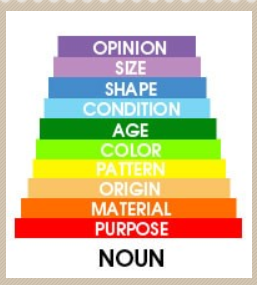I know that if there are two or more adjectives that modify one noun, they all should be placed after that noun. From other question Significance of adjective placement:
If you use two or more adjectives that refer to the same noun they are placed after the noun. Examples: La mujer guapa e inteligente, La casa es grande y bonita.
Two questions in regards to this:
Is it really always like this or sometimes there are exceptions (for example, one adjective before this noun and second/third adjective after this noun)? One example with explanation that I could come up with myself is below.
So, as you know, sometimes placing adjective before or after noun can be correct in both cases in case you want to state 2 different meanings by this. Taken from another question on StackExchange (Significance of adjective placement):
"El señor pobre vs El pobre señor. In this example El señor pobre means the man has no money. El pobre señor means that the man is in a bad situation with troubles not necessarily related to money."
So, maybe it would be correct to say: "El pobre señor alto" to mean that that man is tall AND in a bad situation with troubles not necessarily related to money?
ALSO: maybe you can put one adjective before noun if you want to emphasize particular trait and put second adjective after this noun as an additional detail? For example:
La HERMOSA niña alta
There can be several type of adjectives describing noun (yellow, dangerous, clean, etc.). Does it matter in which particular order these adjectives follow when they are after a noun which they modify? Or in real practice, nobody really cares about that and would not notice any mistakes regarding this (if there could be any in the first place)? To be honest, I never knew how to order adjectives in English (I am not native), but I managed to survive somehow without ever knowing about this and never noticed any strange reaction. And there IS a rule in English. But I could be simply lucky enough memorizing (unconsciously) examples from texts and also there could be slight differences between American and British English.

